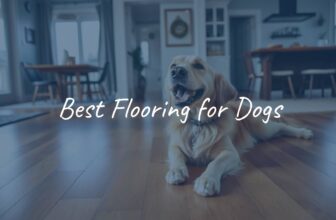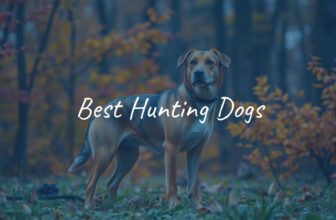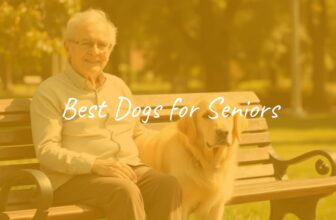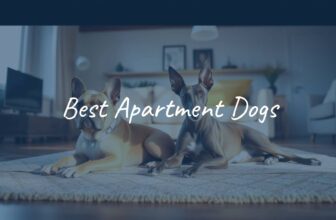
Many people want a dog but struggle with sneezing, itchy eyes, or stuffy noses. While no dog is 100% free of allergens, some breeds shed less and spread fewer allergy triggers. These are often called “hypoallergenic” dogs. In this guide, you’ll learn what that means, why some breeds bother people less, and which dogs and mixes may suit people with allergies.
What Is a Hypoallergenic Dog?
“Hypoallergenic” does not mean a dog is free of allergens. It means a dog is less likely to cause a reaction. Allergies come from proteins in a dog’s dander (dead skin), saliva, and urine. These can float in the air or stick to hair and surfaces.
Hypoallergenic breeds tend to produce fewer allergens or have coats that hold dander instead of spreading it. Many have hair that grows continuously and sheds very little, which helps keep dander from spreading. This difference is key for people with pet allergies.
How Do Hypoallergenic Dogs Differ From Other Breeds?
The big difference is the coat. Many dogs have a double coat with an undercoat that sheds a lot, spreading hair and dander around the home. Many hypoallergenic dogs have a single coat that behaves more like human hair. It grows longer, sheds less, and holds dander in the coat instead of releasing it into the air.
These dogs still have allergens in their dander, saliva, and urine, but less of it becomes airborne. Regular grooming helps keep coats from matting and removes trapped dander, which lowers allergen levels at home.
Can Hypoallergenic Dogs Still Cause Allergies?
No dog is completely allergen-free. Even breeds known for being easier on allergies can trigger symptoms in very sensitive people. Saliva and urine can also cause reactions if you are sensitive. Licks or contact with urine can lead to coughing, itching, or wheezing.
If you have allergies, spend time with the breed you want before you commit. Arrange a short visit with a breeder, rescue, or a friend who owns that breed. This trial time can help you see how you react and help you pick a good match.
Myths vs. Facts About Hypoallergenic Dogs
Let’s clear up some common myths:
- Myth: Hypoallergenic dogs won’t cause allergies at all.
Fact: They produce fewer allergens, but reactions are still possible for some people. - Myth: Only small breeds are hypoallergenic.
Fact: These breeds come in many sizes, from toy to large. Coat type matters more than size. - Myth: Hypoallergenic dogs don’t get allergies themselves.
Fact: The term refers to how dogs affect humans. These dogs can still have food or environmental allergies. - Myth: All “doodle” mixes are hypoallergenic.
Fact: Coat type varies by genetics. Some mixes shed and can trigger allergies.
What Makes a Dog Hypoallergenic?
These dogs are easier for allergy sufferers mainly because of how their coats grow and shed. They don’t stop making allergens; they just spread fewer of them around your home.
Role of Shedding and Dander
Dander is tiny flakes of dead skin that carry allergy-causing proteins. Heavy shedding spreads more dander. Dogs with thick undercoats usually release lots of hair and dander into the air and onto furniture.
Many hypoallergenic dogs shed very little. Their hair grows continuously and tends to hold loose hair and dander. Regular brushing removes that buildup and helps keep allergens low at home. Low shedding and steady hair growth are the main reasons these breeds work better for many people with allergies.
Grooming and Coat Types
Many hypoallergenic breeds have single coats or coats that are curly, wiry, or corded. These textures hold dander and loose hair well. Poodles, for example, have dense curls that rarely shed. Many terriers have wiry coats that also shed less.
The trade-off is grooming. These coats can mat and tangle without steady care. Many dogs need frequent brushing, regular trips to a groomer, and sometimes hand-stripping to pull dead hairs. Keeping up with grooming keeps coats healthy and helps keep allergens lower. If grooming is ignored, even a low-shedding dog can carry a lot of dander in the coat.

Key Factors for Choosing the Best Hypoallergenic Dog
Bringing a dog home is a big choice, especially if you have allergies. Beyond the label, think about fit, care needs, and your daily routine so both you and your dog can do well together.
Allergy Severity and Sensitivity
Know how strong your allergies are. No breed is allergen-free, and every person reacts differently. Ask an allergist which triggers affect you. Before adopting, spend time with the breed you want. Visit a breeder, shelter, or a friend who owns one and see how you feel during and after the visit.
Size and Space Requirements
These breeds range from tiny to very large. Bigger dogs like the Giant Schnauzer or Afghan Hound need room and exercise. Smaller breeds like the Maltese or Bichon Frise are easy to fit into apartments. Pick a size that fits your home and routine.
Temperament and Energy Level
Match the dog’s energy to your lifestyle. Portuguese Water Dogs and Soft Coated Wheaten Terriers need lots of activity and mental games. If you prefer a calmer pet, look at breeds like the Bolognese or Havanese. Think about how much time you can give to exercise, play, and training.
Grooming Needs and Maintenance
Low shedding often means high grooming needs. Many breeds need brushing daily or several times a week. Many also need regular professional trims or hand-stripping. This takes time and money. Plan for grooming costs or learn to groom at home. Skipping coat care can hurt your dog’s comfort and raise allergens in your home.
Family and Children Compatibility
Homes with kids do best with patient, gentle breeds. Bichon Frise, Lagotto Romagnolo, and Bernedoodles often do well with children and other pets if socialized early. Some breeds fit better with adults or older kids. Research typical breed behavior and choose one that fits your family.
Best Hypoallergenic Dog Breeds by Size
You can find low-allergen dogs in many sizes. Whether you want a lapdog or a larger companion, there are good options.
Small Hypoallergenic Dogs
These little dogs are great for small homes and apartments. Many have big personalities despite their size.
Maltese
The Maltese has a long, white, silky coat and a gentle nature. The single coat is similar to human hair and sheds very little. Daily brushing keeps tangles away, or a “puppy cut” can make care easier. They are loving, playful, and fit well in small spaces.
Yorkshire Terrier
Yorkies are tiny, bold, and curious. Their fine, silky hair is low-shedding but needs daily brushing. They adapt well to many living spaces as long as they get attention and walks. They are affectionate and alert companions.
Bichon Frise
Bichons are cheerful and sturdy with soft, curly coats that hold loose hair. They are smart and trainable, and they enjoy families and children. Regular brushing and grooming keep mats away. They do well in apartments and houses.
Coton de Tulear
The Coton de Tulear has a soft, cotton-like coat and a friendly, easygoing nature. The coat sheds a little, but steady grooming is important to prevent mats. They are affectionate, playful, and good with kids and other pets.
Shih Tzu
Shih Tzus have hair, not typical fur, and shed less than many breeds. Their long double coat needs daily brushing to prevent tangles. They can have flat-face health issues like heat sensitivity and tear stains, which need care. They are loving and playful and fit many homes.
Miniature Schnauzer
Miniature Schnauzers are smart, energetic, and easy to recognize by their beard and eyebrows. Their wiry coat sheds little but needs frequent brushing and grooming. They are loyal, make good watchdogs, and need about an hour of daily exercise.
Havanese
The Havanese is small, social, and loves people. The silky coat, straight or wavy, sheds less than many breeds but needs daily brushing. They are bright, playful, and calm, and they fit well in most homes.
Affenpinscher
The Affenpinscher, nicknamed the “monkey terrier,” is small, curious, and amusing. The dense, wiry coat is low-shedding but needs brushing and often hand-stripping. They are loyal lap dogs with medium energy and a bold spirit.
Bedlington Terrier
Bedlington Terriers look a bit like lambs, with curly white coats that don’t shed but grow fast. They need frequent trims. They are affectionate, smart, and active. They prefer company and may worry when left alone for long periods.
Bolognese
The Bolognese is a small, white companion dog with a fluffy, low-shedding coat that needs daily care. They are calm, loving, and gentle, and they usually get along with kids and pets. Good for many living situations.
Chinese Crested
The Chinese Crested comes in hairless and powderpuff types. Both shed little. Hairless dogs need skin care and protection from sun and cold. Powderpuffs have long, silky coats that need steady brushing. Both types are playful and affectionate.
Medium Hypoallergenic Dogs
These dogs offer a balance of size and energy without heavy shedding.
Standard Schnauzer
The Standard Schnauzer is smart, loyal, and active. The wiry coat sheds little, especially if hand-stripped. Regular grooming helps keep dirt and loose hair down. They enjoy long walks, fetch, and puzzle toys and need both exercise and mental work.
Soft Coated Wheaten Terrier
Wheatens are lively and social, with soft, silky coats that shed infrequently. They bond closely with families and often greet people with joyful jumps. They need steady exercise and regular brushing and trims to avoid mats.
Portuguese Water Dog
These dogs were bred to help fishermen and love to swim. Their curly, water-resistant coat sheds very little. They are smart, high-energy, and enjoy active homes. Daily exercise and regular grooming, including frequent brushing, are important.
Lagotto Romagnolo
This Italian breed was used for water retrieving and truffle hunting. The curly, woolly double coat sheds little. Lagotti are friendly, loyal, and good with kids and other pets. Regular grooming prevents mats, and they do well in active families.
Kerry Blue Terrier
Known for a wavy, blue-gray coat that sheds very little, the Kerry Blue is loyal and alert. They can be strong-willed and do best with experienced owners. They need steady training, lots of exercise, and regular grooming to manage the coat.
Barbet
The Barbet is a French water dog related to the Poodle. The dense, curly or wavy coat is hair, not typical fur, and does not shed much. They enjoy swimming and are calm and devoted. Brush two to three times a week and after swims to prevent mats.
Irish Water Spaniel
This is the tallest spaniel, with tight liver-colored curls and a “rat tail.” The coat is water-repellent and sheds seasonally. Weekly brushing and trims every few months help manage it. These dogs are smart, energetic, and need plenty of outdoor time.
Xoloitzcuintli
The Mexican Hairless Dog comes in hairless and coated types, in toy, miniature, and standard sizes. The hairless type is often best for allergy sufferers but needs skin care and protection from sun and cold. The coated type has a short coat that sheds very little. Xolos are intelligent, protective, and bond closely with their families.
Peruvian Inca Orchid
This ancient Peruvian breed is often hairless and naturally low-allergen. They come in small, medium, and large sizes. They are alert, loyal, and sensitive. Like other hairless dogs, they need skin care and weather protection.
Large Hypoallergenic Dogs
If you want a bigger dog without heavy shedding, these breeds may fit well.
Giant Schnauzer
The Giant Schnauzer is strong, devoted, and active. The dense, wiry coat sheds little but needs weekly brushing and frequent trims. They need firm training, lots of exercise, and space. Long walks, runs, hikes, and fetch are great for them.
Afghan Hound
The Afghan Hound has long, flowing hair and a confident look. They shed little, but the adult coat needs regular, thorough grooming to prevent mats. They can be reserved with strangers, so early socialization is very important. Built for speed, they enjoy running and need steady exercise.
Poodle (Standard)
Standard Poodles are smart, steady, and versatile. Their curly single coat has no heavy undercoat and sheds very little. Regular brushing and clipping or hand-stripping keep the coat from matting. They are affectionate, active, and need mental and physical activity to stay happy.

Popular Hypoallergenic Doodle and Mixed Breeds
Mixed breeds with Poodles are popular because many inherit low-shedding coats. Results vary by genetics, so some dogs in a litter may shed more than others. Meet the individual dog, not just the mix name.
Goldendoodle (Golden Retriever × Poodle)
Goldendoodles are friendly and clever. Many have wavy or curly coats that shed very little. They come in many colors and sizes. Regular brushing keeps mats away. They fit many homes but do best with daily exercise.
Labradoodle (Labrador Retriever × Poodle)
First bred as service dogs that are easier on allergies, Labradoodles are smart, gentle, and family-friendly. Coats range from wavy to curly and may shed from low to moderate. They need regular grooming, good exercise, and early socialization.
Bernedoodle (Bernese Mountain Dog × Poodle)
Bernedoodles are large, affectionate, and often good with kids and other pets. Many have thick, wavy coats that shed less if they take after the Poodle side. They need room or solid daily exercise and mental games to stay calm and content.
Aussiedoodle (Australian Shepherd × Poodle)
Aussiedoodles are very smart and very active. Coats can be wavy or curly, often with merle or multicolor patterns. They need lots of activity and brain work to avoid boredom and chewing. Best for active homes with space to play.
Schnoodle (Schnauzer × Poodle)
Schnoodles come from two low-shedding parent breeds, so their coats are usually low-shedding whether curly or wavy. They are bright, playful, and loving. Regular grooming prevents mats. Sizes vary, and they adapt well with daily exercise.
Whoodle (Wheaten Terrier × Poodle)
Whoodles are friendly and loving, with soft coats that shed very little. They need regular brushing and grooming. These dogs are lively and need exercise and mental activity, much like their Wheaten parent.
Shih-Poo (Shih Tzu × Poodle)
Shih-Poos are small, affectionate, and playful. Many have low-shedding coats in straight, wavy, or curly textures. Daily brushing and regular grooming help prevent mats. About 30 minutes of exercise a day suits them well.
Maltipoo (Maltese × Poodle)
Maltipoos are cheerful lap dogs with light, fluffy coats that usually shed very little. They love human company, fit small homes, and need steady brushing to avoid tangles.
Cavapoo (Cavalier King Charles Spaniel × Poodle)
Cavapoos are gentle and sweet. Many inherit a wavy or curly coat that sheds less. They do well in apartments with short daily walks and regular brushing to keep the coat clean and tangle-free.
Cockapoo (Cocker Spaniel × Poodle)
Cockapoos are friendly and happy. Coats may be wavy or curly and often shed lightly. They need daily walks, playtime, and regular grooming. They are warm, people-focused dogs.
Tips for Living With Hypoallergenic Dogs
Even with a low-shedding dog, it helps to control allergens at home. Try these simple steps.
Keep Up With Grooming and Bathing
Brush often to remove loose hair and dander. Some dogs need daily brushing; others need it several times a week. This spreads natural oils and keeps skin and hair healthy. A bath every four to six weeks can lower allergens a lot, especially with a dander-reducing shampoo. Many breeds also need trims or hand-stripping. Budget time and money for grooming or learn to do it at home.
Maintain a Clean Home
Clean on a schedule to keep allergens low. Vacuum often with a HEPA-filter vacuum. Dust with a damp cloth. Wash dog beds weekly in hot water. Hard floors are easier to clean than carpets and tend to hold fewer allergens.
Air Filtration and Allergen Control
Use air purifiers with HEPA filters in main rooms and bedrooms. Keep air fresh with open windows or exhaust fans when you can. Make bedrooms or other spaces off-limits to your dog to give allergy sufferers a break. Change HVAC filters on schedule.
Consult With Medical Professionals
Talk with your doctor or an allergist about ways to manage symptoms. Options include over-the-counter or prescription meds, nasal sprays, and allergy shots (immunotherapy). Avoid letting your dog lick your face or hands if saliva triggers you, and be careful around accidents since urine can also cause reactions. With good medical advice and a clean routine, many people with allergies can live well with a hypoallergenic dog.
Frequently Asked Questions About Hypoallergenic Dogs
Learning about hypoallergenic dogs can bring up many questions. Here are clear answers to common ones.
Are hypoallergenic dogs completely allergy-free?
No. Hypoallergenic means “less likely to cause allergies.” All dogs produce allergens in dander, saliva, and urine. These breeds shed less or trap dander, which lowers what gets into the air. People with severe allergies may still react. The goal is to lower exposure enough to make life with a dog possible.
How can I test if a dog breed is suitable for my allergies?
Spend time with the breed before you adopt. Visit a breeder, rescue, or a friend who owns one. Watch for symptoms during and after the visit, like a runny nose, itchy eyes, rash, or wheezing. An allergist can also test which pet allergens affect you. Using both real-life exposure and medical advice gives the best picture.
Which hypoallergenic breed is best for families with children?
Many do well with kids, including the Bichon Frise, Poodle (Miniature and Standard), Portuguese Water Dog, Lagotto Romagnolo, and Bernedoodle. They are usually patient, playful, and smart. Early socialization and training matter for every breed. Teach children to be gentle and always supervise.
Can mixed breed dogs be hypoallergenic?
Yes. Many mixes with a hypoallergenic parent, like a Poodle, may shed less. But mixed breeds are less predictable. A puppy might take after the non-hypoallergenic parent and shed more. Watch how the individual dog’s coat grows and sheds before you decide. Reputable breeders can share details about the parent dogs to help you choose.






